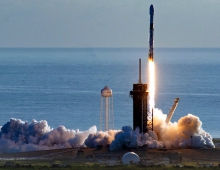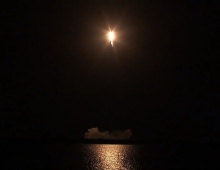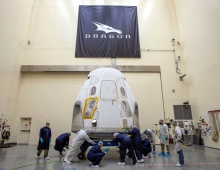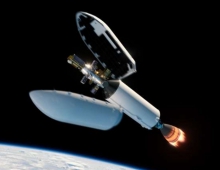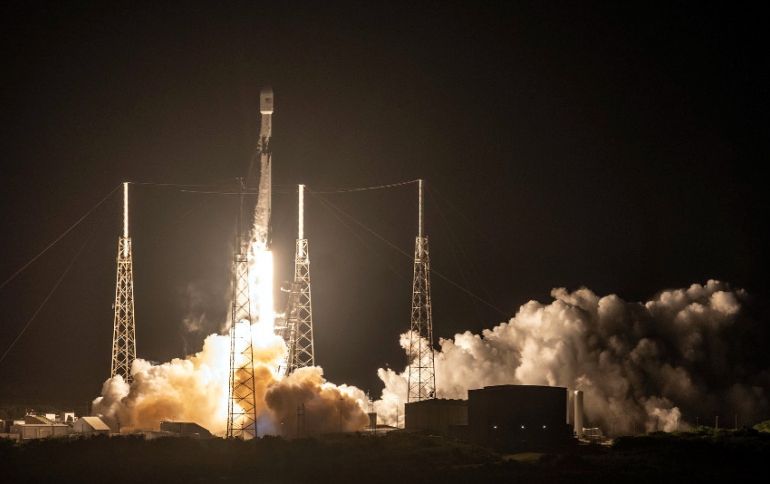
SpaceX Launches 60 Satellites for Starlink Space-Based Broadband Network
Elon Musk’s Space Exploration Technologies Corp. launched 60 Starlink satellites late Thursday, which will be used to create a space-based network to provide broadband service around the world.
On Thursday, May 23 at 10:30 p.m. EDT, the Falcon 9 rocket and payload launched from Space Launch Complex 40 (SLC-40) at Cape Canaveral Air Force Station, Florida.
Falcon 9’s first stage for this mission previously supported the Telstar 18 VANTAGE mission in September 2018 and the Iridium-8 mission in January 2019. Following stage separation, SpaceX landed Falcon 9’s first stage on the “Of Course I Still Love You” droneship, which was stationed in the Atlantic Ocean. Approximately one hour and two minutes after liftoff, the Starlink satellites were deployed at an altitude of 440km. They then used onboard propulsion to reach an operational altitude of 550km.
These are the first bunch of satellites designed to work within this constellation. SpaceX had launched two test satellites before, but today’s launch will be an important step towards eventually launching and operating 12,000 satellites in orbit to beam internet to the ground by the 2020s.
With a flat-panel design featuring multiple high-throughput antennas and a single solar array, each Starlink satellite weighs approximately 227 kilograms. Starlink satellites are also capable of tracking on-orbit debris and autonomously avoiding collision.
The launched was originally planned for last week, but it was scrapped because of high winds.
SpaceX is one of nine companies that have been approved by the Federal Communications Commission (FCC) in the US to launch large constellations of satellites to provide internet services, totaling about 15,000 satellites across all nine. Other companies have plans for constellations too, such as Amazon and its 3,000-strong Project Kuiper, although they do not yet have FCC approval.
Both SpaceX and Boeing Co. have contracts with NASA to ferry American astronauts to the International Space Station as part of the agency’s Commercial Crew program. SpaceX completed the Demo-1 flight of its “Crew Dragon” without humans on board in March. But in late April, the Dragon was engulfed in flames and destroyed during a test, a mishap that probably will push back the commercial crew schedule.


